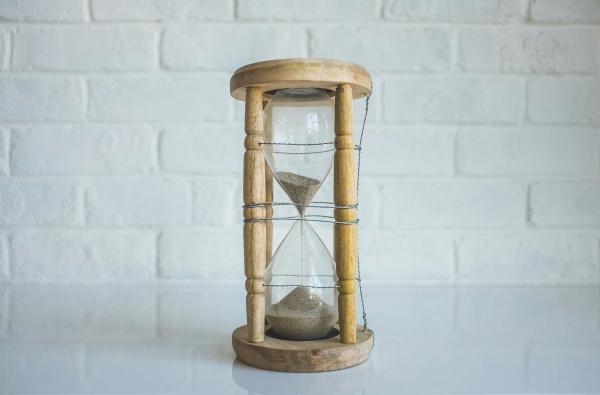The description
A simple, yet complete, example of the interval in action is a countdown clock. You could also apply the following to a web clock.
Let’s say you want to create a New Year’s countdown app.
|
|
It should meet the following requirements:
-
Use the
CountdownSegmentcomponent to display days, hours, minutes, and seconds until 0:00:00 a.m. of January 1st next year.1 2 3 4 5 6 7 8<template> <div class="segment"> <div class="number-wrapper"> <span class="number">0</span> </div> <span class="block pt-2 label">{{ label }}</span> </div> </template> -
Each number should update appropriately every second.
-
You should update the minutes, seconds, etc. as they tick by.
-
The
CountdownSegmentcomponent must accept anumberprop and use it to display how much x is left (x being days, minutes, etc.).
So let’s dissect the step to get each value: daysLeft, hoursLeft, minutesLeft and secondsLeft.
What is the time now
Using the Date API, simply use the constructor new Date(). It gives you the time now.
Getting the next new year’s date and time
If you’re new to JavaScript, I need to warn you: JavaScript’s Date object tracks time in UTC internally, but typically accepts input and produces output in the local time of the computer it’s running on.
When you use the various functions of the Date object, the computer applies the local time zone to the internal representation. This is the case for new Date() constructor that gives you the date and time on your time zone.
If you initialize, like I did, the next new year’s value with the new Date(year, monthIndex, day) constructor, be aware of two caveats:
- You will have time difference if you aren’t in GMT+1 time zone (London time) since it provides GMT+1 time (UTC is GMT time).
- Also, as you can read in the
new Date(year, monthIndex, day), the second argument is an index and it’s zero-based. So January isn’t month 1 but month 0.
So, what is the JavaScript code for the new year’s date and correct time for your time zone?
Use const nextNewYear = new Date('2025-01-01') constructor as this will work just like the new Date() and you’re sure that you aren’t missing or having extra hours depending on your time zone.
Getting the computed variables
The source will be a ref (the now time).
|
|
Next, we want to get the time left in seconds until next new year:
|
|
Then, we can start calculating daysLeft, hoursLeft, minutesLeft and secondsLeft:
|
|
Animate the countdown
If you print the computed in the template, you will get the exact countdown at the moment Vue compiles and loads the application. But the numbers don’t update.
How do you make sure all values updates correctly as time come close to the new year date?
Let’s recall the need: update the minutes, seconds, etc. as they tick by. How do you perform an operation on a time interval with JavaScript?
Yes, I hinted the solution: with setInterval.
Let’s do that with the following code:
|
|
We reassign rightNow to the current date using the constructor on 1000 milliseconds basis.
It’s important to note that a good practice is to assign the return value of setInterval to a variable. It holds the identifier of the interval that you use as the argument clearInterval(id) to stop the interval.
But, where do you put it when coding a Vue application?
Calling clearInterval() in the script setup will stop the interval and the countdown won’t animate…
With Vue, there is a hook that is called on the destruction of the component: onUnmounted.
The following is the Vue 3 syntax within a script setup:
|
|
There you have it: a countdown that animates every second until a give date.
When the countdown reach zero on all the variables, simply call the clearInterval… You don’t see the countdown going backward then…
Do you know how to do that?
|
|
Credit: Photo by Kenny Eliason on Unsplash.
